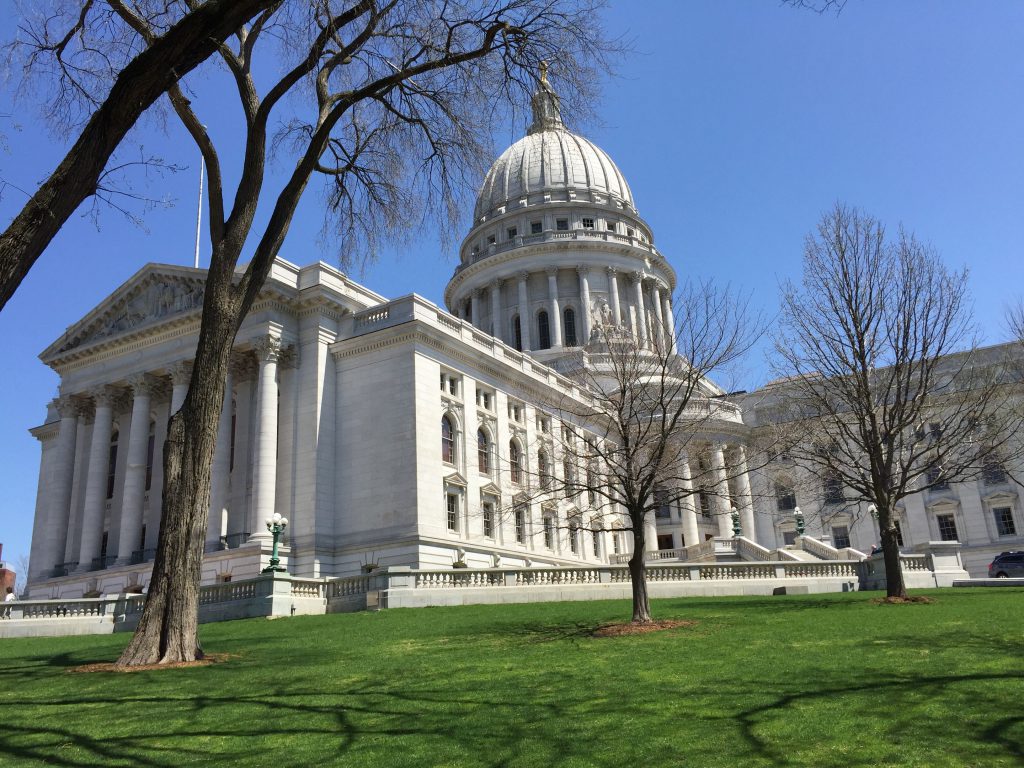State Budget Needs Major Repairs
Everything has changed since two-year budget passed in July.
The state budget passed only 10 months ago gave the Department of Workforce Development (DWD) a spending increase of 0.8 percent. In a booming economy with record statewide unemployment, that was no problem.
But that budget didn’t foresee 400,000 calls to DWD between 6 a.m. and 10 a.m. one March morning alone – calls from just-laid-off workers wanting to know how to file for unemployment benefits.
Laid off by businesses shut down or scaling back because of the COVID-19 health emergency, those anxious workers called because DWD’s on-line application process was swamped, bogged down and had to be upgraded.
Nor did that state budget foresee that DWD would get a record 241,800 claims for unemployment benefits in the last two weeks of March. That number – 241,800 – is about 8 percent of the state’s 2.99 million non-farm workers, according to the U.S. Bureau of Labor Statistics.
DWD needs at least 80 more employees to cope with increased demands on the Unemployment Insurance (UI) system alone, Gov. Tony Evers said.
The $2.2 trillion federal stimulus package will boost the minimum state benefit by $600 for many laid-off workers, for a few weeks.
The federal package also included $18.9 million to help DWD administer the exploding demand for UI benefits. But DWD Secretary Caleb Frostman said in a WisconsinEye interview he didn’t know if that additional $18.9 million would be enough.
That federal stimulus package also included $1.9 billion in immediate cash for state government. But demands on that $1.9 billion – buying more ventilators and personal protective equipment, soaring Medicaid and other health-care costs, and requests for help from local police, sheriffs and health departments – could quickly wipe it out.
The DWD is Exhibit A in the warning issued by Assembly Speaker Robin Vos and Senate Majority Leader Scott Fitzgerald last week: The 2019-21 budget passed just 10 months ago is going to have to be rewritten. The tax-and-spend numbers on which that budget was based no longer work.
That budget was built on a “pretty great economy,” Vos noted. He and Fitzgerald have co-chaired the Legislature’s Finance Committee.
The new reality is that state tax collections will be down “significantly,” because of COVID-19 economic shutdowns, while demand on state services – jobless benefits, for example, and health care – will increase, Vos added.
State government’s top three sources of revenue – individual and corporate income taxes and the 5 percent sales tax – had been projected to bring in an additional $400 million between the current year and the one starting July 1. That now seems unlikely.
The result?
First, Vos predicted, there is “no doubt” state government’s surplus accounts – which total a record $1.2 billion – will have to be tapped to make up shortfalls in tax collections and demands for more services.
The old two-year budget spent the most on these programs, excluding highways, according to the Legislative Fiscal Bureau (LFB): K-12 schools, $12.75 billion; Medical Assistance, $6.7 billion; Corrections, $2.36 billion; UW System, $2.24 billion; tax credits to offset property tax bills, $2.1 billion; aid to local governments, $1.7 billion, and technical colleges, $1 billion.
At some point – either this fall or in January, when the next Legislature convenes – spending on those critical programs must be reconsidered in a “budget repair bill” using new LFB estimates of tax collections. Past governors have started the budget-repair process by submitting a revised spending plan.
The longer officials wait to address the shortfalls, the greater the potential painful cuts they may have to make.
One more example of the innocence in the budget passed 10 months ago: It included no increase in the budget for the Wisconsin Economic Development Corporation (WEDC).
But, in the wake of the COVID-19 crisis, WEDC has been charged with helping small businesses recover. And it also received 3,900 queries seeking clarification of the governor’s open-or-closed order of “essential” and “non-essential” businesses.
Yes, there will be many fixes needed in that budget repair bill.
Steven Walters is a senior producer for the nonprofit public affairs channel WisconsinEye. Contact him at stevenscotwalters@gmail.com
More about the Coronavirus Pandemic
- Governors Tony Evers, JB Pritzker, Tim Walz, and Gretchen Whitmer Issue a Joint Statement Concerning Reports that Donald Trump Gave Russian Dictator Putin American COVID-19 Supplies - Gov. Tony Evers - Oct 11th, 2024
- MHD Release: Milwaukee Health Department Launches COVID-19 Wastewater Testing Dashboard - City of Milwaukee Health Department - Jan 23rd, 2024
- Milwaukee County Announces New Policies Related to COVID-19 Pandemic - County Executive David Crowley - May 9th, 2023
- DHS Details End of Emergency COVID-19 Response - Wisconsin Department of Health Services - Apr 26th, 2023
- Milwaukee Health Department Announces Upcoming Changes to COVID-19 Services - City of Milwaukee Health Department - Mar 17th, 2023
- Fitzgerald Applauds Passage of COVID-19 Origin Act - U.S. Rep. Scott Fitzgerald - Mar 10th, 2023
- DHS Expands Free COVID-19 Testing Program - Wisconsin Department of Health Services - Feb 10th, 2023
- MKE County: COVID-19 Hospitalizations Rising - Graham Kilmer - Jan 16th, 2023
- Not Enough Getting Bivalent Booster Shots, State Health Officials Warn - Gaby Vinick - Dec 26th, 2022
- Nearly All Wisconsinites Age 6 Months and Older Now Eligible for Updated COVID-19 Vaccine - Wisconsin Department of Health Services - Dec 15th, 2022
Read more about Coronavirus Pandemic here
The State of Politics
-
RNC Brings Fame to Gen Z Party Leader
 Jul 15th, 2024 by Steven Walters
Jul 15th, 2024 by Steven Walters
-
Wisconsin’s Republican Roots Run Deep
 Jul 8th, 2024 by Steven Walters
Jul 8th, 2024 by Steven Walters
-
Feuding Supreme Court Justices Need a Break
 Jul 1st, 2024 by Steven Walters
Jul 1st, 2024 by Steven Walters






















